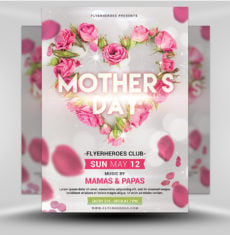Is it possible to easily generate tons of buzz around the DJ event at your venue without breaking the bank? Of course it is! Try out our DJ club flyer!
The upper part of this colorful flyer features a cool DJ with sunglasses and headphones wearing a gold necklace and a big city skyscrapers and a bright sky behind him. DJ’s name is promoted in capital letters in white, as a stark contrast to the rest of the flyer, surrounded by two large speakers, while the lower part of the flyer shows a spacy dancefloor. All the additional information is included in the flyer, very easy to spot, and what’s more, completely customizable, so you can enter your own.
Why wait any longer? Download our DJ club flyer today to almost effortlessly attract dance floor enthusiasts to your venue!
Fonts Required
General Information:
This flyer template is a premium Photoshop PSD flyer/poster template designed by FlyerHeroes to be used with Photoshop CS4 and higher.
Once you have purchased this flyer template, you are free to make any customizations and modifications you’d like.
You are also granted an unlimited use and 100% royalty-free license, meaning you can use this product as many times as you wish. You are free to use this product in both personal and commercial work.
You can read more about our file licenses here and our file requirements here.
If you have any further questions, please feel free to direct your questions to FlyerHeroes Support.

















